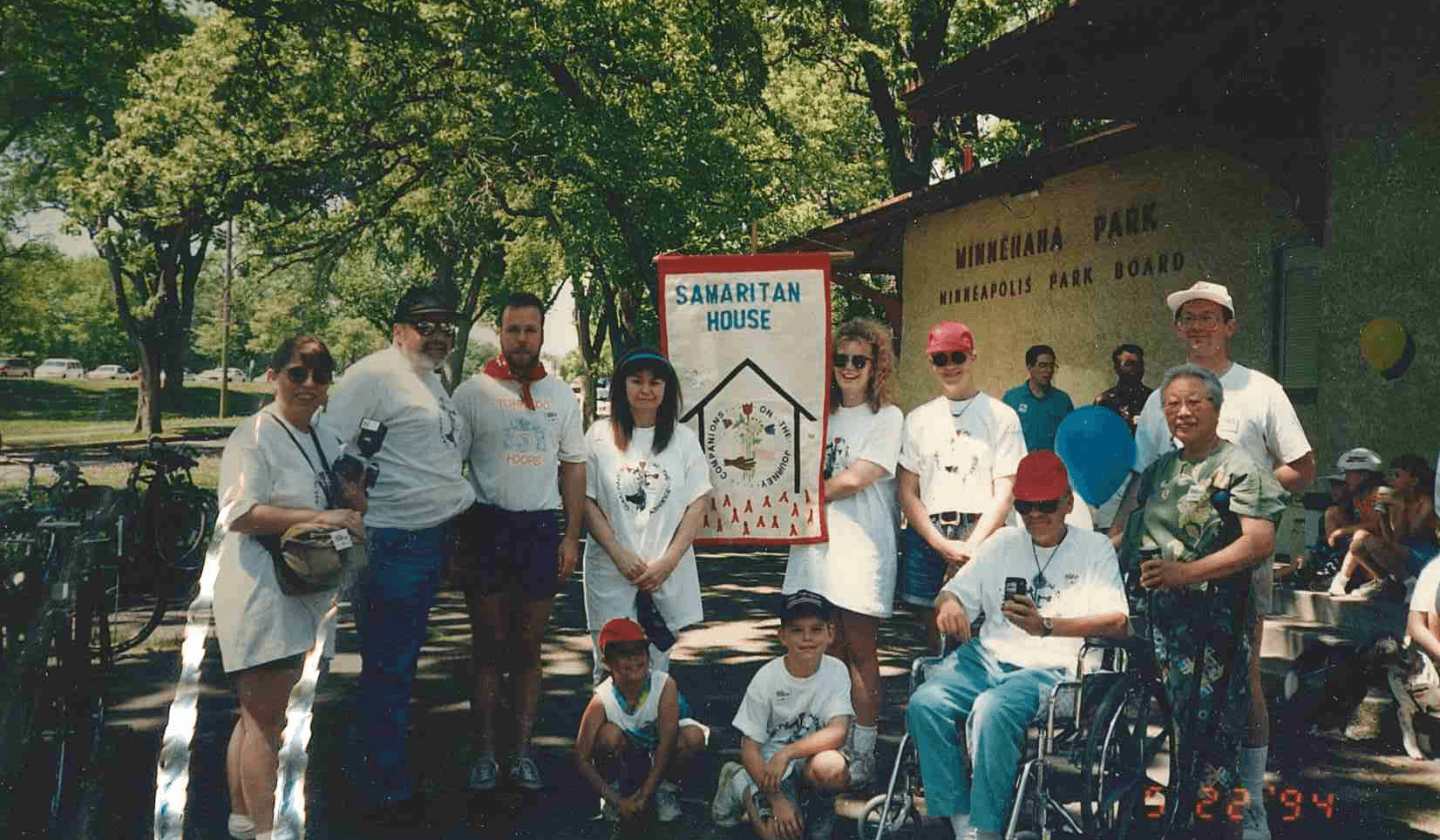The Clare Housing of today is the result of a long journey. That journey involved the compassionate energy of thousands of individuals from many religious communities and organizations.
Below you’ll find a timeline of the openings of different houses and developments, and other major turning points that have marked the evolution of Clare Housing over the years.
-
1987
Brother Louis Blenkner, a Benedictine monk, opened the first Minnesota home that took in people who were dying of AIDS. Eventually, the home was licensed as adult foster care and served as a model for later homes. Volunteers were the essential backbone of these Care Homes.
-
1990
Through the efforts of members of St. Joan of Arc Church, Grace House opened in the former church rectory. The Franciscan Brothers took over the operation of Brother Louis' home, renaming it Samaritan House.
-
1993
Agape Home was opened in the Central neighborhood of Minneapolis. Members of the Metropolitan Community Church were instrumental in bringing this home into existence.
-
1995
The introduction of highly active antiretroviral therapies changed the community’s need beyond end-of-life care to include transitional care during recovery, and long-term care for people needing round-the-clock support.
-
1996
Clare House opened in the Mac-Groveland neighborhood of St. Paul, with major support from the Sisters of St. Francis and members of the Roman Catholic community of St. Paul.
-
1998
Grace II, designed and built specifically for the purpose of housing people living with HIV/AIDS opened next to the original Grace House, with great support from the local design community.
-
1999
Agape Dos, designed and built specifically for people living with HIV/AIDS opened in the Lyndale neighborhood of Minneapolis. Grace and Agape Homes merged to form AIDS Care Partners. Clare Housing assumed the operations of Samaritan House, renaming it Damiano House.
-
2005
Reflecting the growing independence made possible thanks to antiretroviral therapies, Clare Housing opened Clare Apartments in Northeast Minneapolis, offering 32 units of supportive housing for people living with HIV.
-
2006
AIDS Care Partners and Clare Housing merged.
-
2008
Clare Housing set a course to create more housing for people living with HIV/AIDS in the Twin Cities. A Scattered Site Housing program was launched, partnering with rental property owners to set aside dedicated affordable housing for people living with HIV and their families.
-
2011
Clare Midtown, a second multi-unit apartment building opened, providing 45 units of affordable housing for people living with HIV.
-
2014
Clare Housing’s Board of Directors established a new strategic framework, setting a goal of adding 100 units of housing within four years.
-
2015
Clare Terrace opened on World AIDS Day to a warm reception from the Robbinsdale community. This development provides 36 units of affordable housing for people living with HIV.
-
2017
Marshall Flats, a 36-unit supportive housing apartment building opened in Northeast Minneapolis.
-
2019
After 26 years in operation, Agape Home was retired. Thanks to the success of HIV medications, fewer Clare Housing residents needed the 24/7 medical support provided by this Care Home, which was sold. The funds were reinvested in the upkeep of the three remaining Care Homes.
-
2023
The Hotels to Housing program began, helping HIV-positive people in Hennepin County experiencing unsheltered homelessness move off the streets quickly. Clients move temporarily into hotels followed by a move into permanent supportive housing within weeks.
-
2024
Clare Housing began serving people living with HIV in greater Minnesota for the first time. The Bridge to Stability program provides emergency short-term housing assistance to people living with HIV, together with their families, outside of the Twin Cities metro area.
-
2025
Thanks to an appropriation of $1 million championed by Senators Tina Smith and Amy Klobuchar and a $2.5 million grant for housing innovation from HUD, Clare Housing opened Indigo House, a no-barrier housing pilot for people experiencing unsheltered homelessness.


